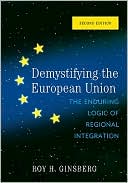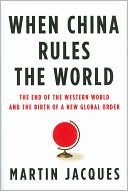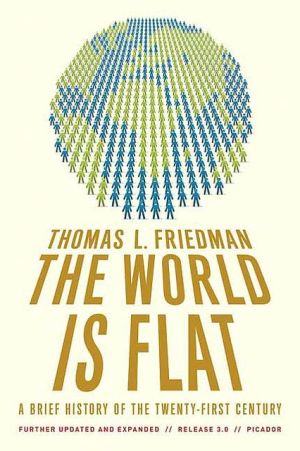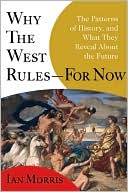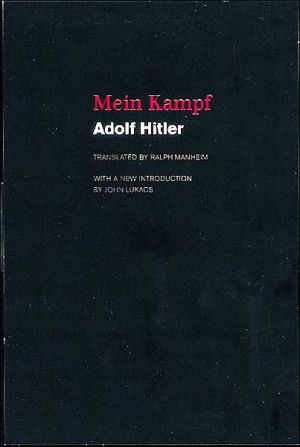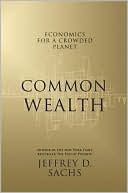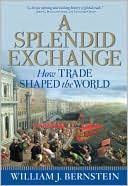Demystifying the European Union: The Enduring Logic of Regional Integration
Search in google:
The European Union_the world's greatest experiment in interstate reconciliation through regional integration_is now fifty years old. However, it remains a mystery to many people in and outside Europe. This clear and comprehensive book is dedicated to _demystifying_ the EU for both introductory and seasoned students of European integration. Roy H. Ginsberg begins with the foundation blocks of history, law, economics, and politics to provide the context for understanding integration. He then deconstructs the EU into its individual elements to examine them in relation to one another and to the whole before reconstructing the EU as a single polity. In doing so, he evaluates the EU's scope for agency and its effects on Europeans and non-Europeans alike. Emphasizing this wider perspective, Ginsberg convincingly demonstrates that the EU is a wellspring of support for conflict prevention and resolution throughout the world.
List of Illustrations xiiiAcknowledgments xvPreface xviiAcronyms xixNote to Instructors xxiiiIntroduction 1The Importance of the European Union to the World 1For Europeans 2For Americans 5For Europeans and Americans Together 6The Structure of the Book 8Key Concepts 9Study Questions 9Selected Readings 9Notes 10Foundations 11Unity and Disunity 13Preview 13Presence and Absence of Regional Unity and Integration 13Incarnations and Ghosts 15Unity and Disunity in Christian Europe 17The Renaissance, the Hanseatic League, and the Elements of Unity 22Revolution, War, and Peace 24Extreme Nationalism and Disintegration 29Elusive Unity and War Again 32Two Unities and a Cold War 37The Reflex to Cooperate: Early Modern European Integration, 1947-1957 39Collective Self-Defense and the United States 40Regional Economic Integration, the Schuman Plan, and the United States 41Extension of Collective Self-Defense 49The Treaties of Rome 52Review 56Key Concepts 57Study Questions 57Selected Readings 58Notes 58Theory and Practice of Modern European Integration 61Preview 61Political Thinkers, Writers, and Statesmen: Fourteenth-Twentieth Centuries 62Postwar Political Theories of European Integration 67Federal and Functional Logics 67Intergovernmentalism and Its Variants 70Peaks and Troughs of Modern European Integration 72Growth, Turmoil, and Compromise: 1958-1969 72Expansion and Sclerosis: 1970-1985 74Revitalization, Enlargement, New Compacts, and the Return of Uncertainty: 1986-Present 79Political Theory of European Integration Revisited 86Conventional Political Theories of Modern European Integration 87Revisionist Theories of Modern European Integration 89Review 90Key Concepts 91Study Questions 91Selected Readings 92Notes 92The Economic and Legal Foundations of the European Community 95Preview 95The Economics of the European Community 97Customs Union Theory 99Optimum Currency Area Theory 103International Political Economy 106Recap 107The Law of the European Community 108Structure and Function 110Avenues of Legal Redress 112Principles and Landmarks 117Cases by Area of EC Competence 121Looking Back, Looking Ahead 125Review 129Key Concepts 130Study Questions 130Selected Readings 131Notes 131The European Union in Practice 137The Contexts and Actors of EU Governmental Decisionmaking 145Preview 145The Contexts of EU Governmental Decisionmaking 145Inside World 146European World 148Outside World 150The Inputs into EU Governmental Decisionmaking 151EU Member Governments, Institutions, and NGOs 152Political Parties and Electorates 155Actors outside the European Union 156Review 157Key Concepts 157Study Questions 158Selected Readings 158Notes 158Inside EU Governmental Decisionmaking 160Preview 160Conscience of the European Union: The Commission 164Appointment and Delegation 165Structure 168Function and Agency 169Role in EU Governmental Decisionmaking 171Taking Stock 174Fulcrum of Political Power in the European Union: The Council 175Structure and Function 177Role in EU Governmental Decisionmaking 179The Sovereigns of the European Union: The European Council 182Taking Stock 183Voice of the European Union: The European Parliament 184Structure and Function 189Powers and Role in EU Governmental Decisionmaking 192Taking Stock 199The Budgetary Process of the European Community: A Thumbnail Sketch 200The Auditor of the European Union: The European Court of Auditors 201The Banks of the European Union 203The Agencies of the European Union 204The European Union and the United States: Insights from Comparative Government 205Constitutionalism and Federalism 207Separation of Powers and Checks and Balances 208The EU and U.S. Executives 210The EU and U.S. Legislatures 212Review 214Theoretical Observations 214Empirical Observations 216Key Concepts 217Study Questions 217Selected Readings 218Notes 218The Outputs of EU Governmental Decisionmaking 223Preview 223Types of EU Governmental Decisionmaking Instruments 224Internal Market 226Origins, Objectives, and Timeline 226Formulation and Execution 228Key Elements 229Common Commercial Policy 242Origins, Objectives, and Timeline 242Formulation and Execution 243Key Elements 244Monetary Policy 247Origins, Objectives, and Timeline 247Formulation and Execution 250Key Elements 251Agriculture 254Origins, Objectives, and Timeline 254Formulation and Execution 254Key Elements 255Regional Development 257Origins, Objectives, and Timeline 257Formulation and Execution 260Key Elements 261Environment, Fisheries, and Food Safety 261Origins, Objectives, and Timeline 261Formulation and Execution 263Key Elements 264Justice and Home Affairs 266Origins, Objectives, and Timeline 266Formulation and Execution 269Key Elements 270Review 273Theoretical Observations 273Empirical Observations 275Key Concepts 277Study Questions 278Selected Readings 278Notes 278EU Foreign and Security Policy 283Preview 283Origins, Objectives, and Timeline 286Phase One, 1958-1970 289Phase Two, 1970-1993 290Phase Three, 1993-1999 291Phase Four, 1999-Present 292Formulation and Execution 293Institutions and Decisionmaking 293Instruments and Military Capabilities 296Key Elements-Multilateral Functional Issues 298Key Elements-Multilateral Security Issues 300EU Security Operations 300Nonproliferation, Disarmament, and Arms Control 302Combatting Crime and Terrorism 303Key Elements-Countries and Regions 304Central and Eastern Europe and Enlargement 304European Neighborhood 306EU-EFTA Relations 306Western Balkans 307Ukraine and Russia 309Mediterranean Littoral and Middle East 311Sub-Saharan Africa 316Asia 318Latin America, the Caribbean, and Canada 319The United States 320Review 325Theoretical Observations 325Empirical Observations 326Key Concepts 326Study Questions 327Selected Readings 327Notes 327Evaluating European Integration 329The Internal Dimension of European Integration 331Preview 331Growth of Membership 331Intra-EU Trade and the Euro as an Official World Reserve Currency 332EP Elections and Ratification Procedures for EC/EU Treaties 333Public Opinion 336Historical Data and Overall Perceptions of the European Union 337Importance of the European Union and Support for Political Unification 337Benefits of Membership 338Image of and National Power in the European Union 341Institutions and Democracy 343Supranational Institutions 344Intergovernmental Institutions 344Democracy in the European Union 345Policies of the European Union 346Internal Market Policy and Economic Issues 346Monetary Policy 347Agricultural and Environmental Policies 347Justice and Home Affairs 350Review 351Key Concepts 353Study Questions 353Notes 353The External Dimension of European Integration 357Preview 357Member Governments as a Measure of EU Foreign Policy Effect 358Public Opinion as a Measure of EU Foreign Policy Effect 359External Political Impact as a Measure of EU Foreign Policy Effect 364Inaction as a Measure of EU Foreign Policy Effect 366Effects of the European Union on Multilateral Functional Issues and Organizations 367Effects of the European Union on Multilateral Security 369Military Crisis Management 370Police Action 373Rule of Law, Border Patrol, Monitoring, and Other ESDP Missions 375Effects of the European Union on Countries and Regions 377Europe 377Mediterranean Basin, Africa, and Middle East 380Asia and the Western Hemisphere 383Review 384Key Concepts 385Study Questions 385Selected Readings 386Notes 386Conclusions 387The European Union's First Half-Century 387The European Union at the Intersection of Theory and Practice 388Demystifying the European Union 389Constructing and Deconstructing the European Union 389The Importance of the European Union 390Glossary 393Index 397About the Author 423
